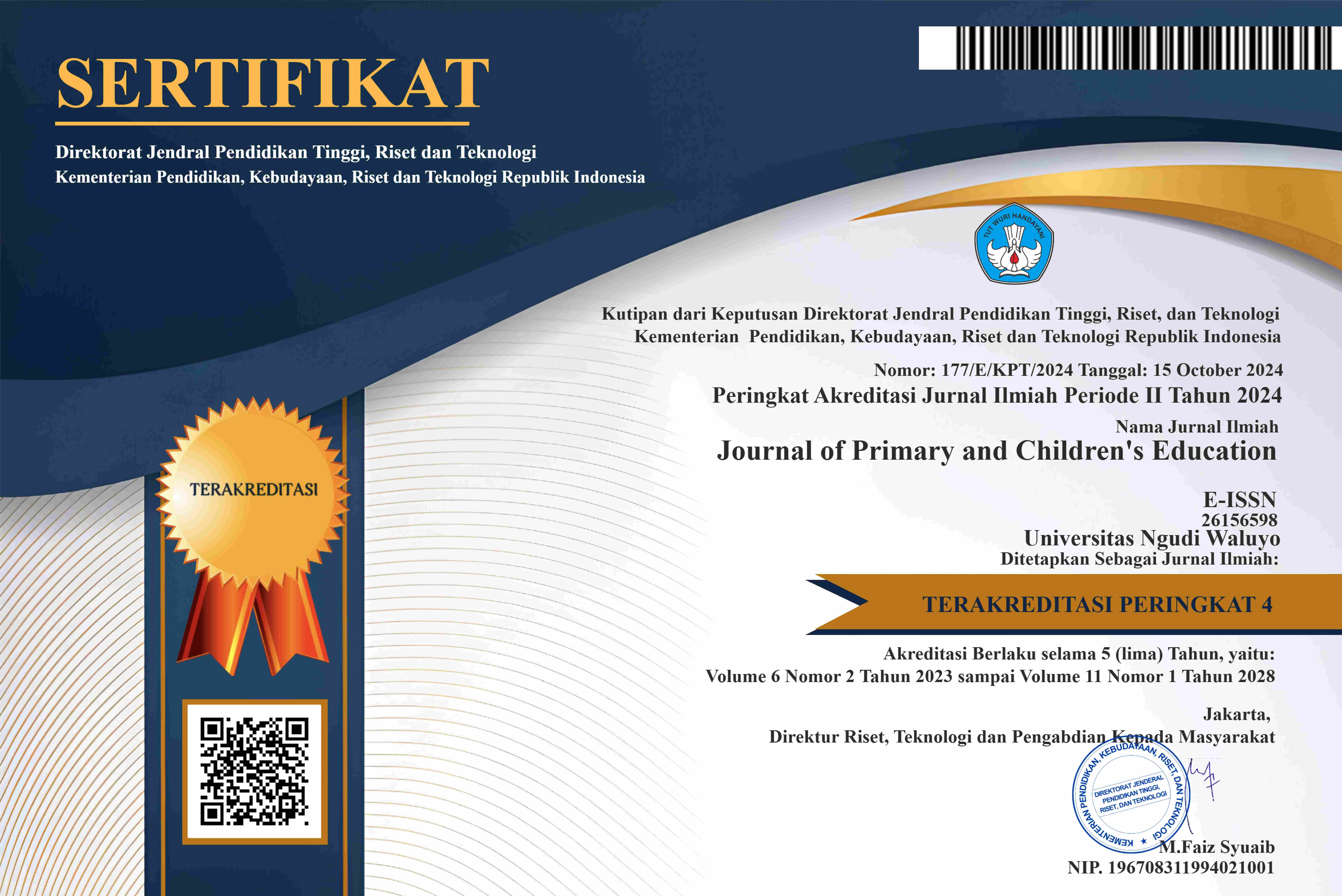PENGARUH KUALITAS PELAYANAN TERHADAP KEPUASAN DAN KETIDAKPUASAN MASYARAKAT KOTA SOLO SEBAGAI KOTA LAYAK ANAK
DOI:
https://doi.org/10.35473/jnctt.v5i1.1598Abstract
Solo City is one of the cities for observing children. This is evidenced by the changes and achievements of the City of Solo as a Child-friendly City. Implementation of Presidential Regulation Number 25 of 2021 concerning Child Friendly Regency/City Policies, with the Law on assisting Child Friendly Cities which has 6 main indicators (institutional, basic health and welfare, civil rights and freedoms, family environment and alternative care, special protection, and education, use of leisure time and cultural activities) with 24 sub-indicators making progress in the process of achieving Child Friendly Cities certainly has value that is felt by the community. A service quality is said to be successful if the value of satisfaction is higher than the value of dissatisfaction. This study aims to examine the service quality variable in the City of Solo in implementing the Child Friendly City program. By using a service quality model that includes 5 spaces, a simple research model concept and using a simple regression analysis hypothesis testing in this study, the results obtained indicate that the satisfaction value is lower than the dissatisfaction value. This study found that there were things that were missed during the service quality process so that community satisfaction had a low value. What is expected by the community is not in accordance with the expected reality. So that these results provide an indication that the achievement of service quality in Solo City as a Child Friendly City has not been categorized as a maximum service quality even though all forms of processes have been carried out to implement Solo City as a Child Friendly City according to the indicators.
References
Aaker, David A. (2013). Manajemen Pemasaran Strategi. Jakarta: Salemba Empat.
Angelova, B & Zekiri, J. (2011). Measuring Customer Satisfaction with Service Quality Using American Customer Satisfaction Model (ACSI Model). International Journal of Academic Research in Business and Social Sciences, 1 (3): 232-258.
Boshoff, C. and Allen, J. (2000). The influence of selected antecedents on frontline staff’s perceptions of service recovery performance. International Journal of Service Industry Management. 11 (1): 63-90.
Bridgman, Ray. 2004. Children, Youth and Environments. JSTOR. 14 (2): 178-200.
Chenet, P., Tynan, C. and Money, A. (2000). The service performance gap: testing the redeveloped causal model. European Journal of Marketing. 34 (3/4): 472-495.
Culiberg, Barbara, & RojÅ¡ek, IÄa. (2010). Identifying Service Quality Dimensions as Atecedents to Customer Satisfaction in Retail Banking. Economic and Business Review. 12 (3): 151-166.
Dharmmesta, Basu Swastha dan Shellyana Junaidi. (2002). Pengaruh Ketidakpuasan Konsumen, Karakteristik Produk, dan Kebutuhan Mencari Variasi Terhadap Keputusan Perpindahan Merek. Jurnal Ekonomi dan Bisnis Indonesia. 17 (1): 91-104.
Ehab, H., Elshater, A., Toimah, A. (2021). Investigating the Children’s Satisfaction in Cairo Toward Achieving Child-Friendly City. Springer. 7 (40): 501–512
Lu. L, Chang. H, & Yu. S. (2013). Online Shoppers Perception of E Retailer Ethnics, Cultural Orientation and Loyalty. Internet Research. 23 (1). 47-68.
Ma’arif, Afrizal. (2016). Arahan Penyediaan Ruang Terbuka Hijau Untuk Menyerap Emisi CO2 Kendaraan Bermotor di Surabaya (Studi Kasus: Koridor Jalan Tandes Hingga Benowo) (Tugas Akhir). Surabaya: Fakultas Teknik Sipil dan Perencanaan Institut Teknologi Sepuluh November.
Rangkuti, F. (2011). Riset Pemasaran. Jakarta: Gramedia Pustaka Utama.
Rohaeni, Heni., & Marwa, Nisa. (2018). Kualitas Pelayanan Terhadap Kepuasan Pelanggan. Jurnal Ecodemica. 2 (2): 312-318.
Rosalin, Lenny., Handayani, Rini., dkk. (2018). Kabupaten atau Kota Layak Anak : Bahan Advokasi Kebijakan KLA. Jakarta : Deputi Bidang Tumbuh Kembang Anak Kementrian Pemberdayaan Perempuan dan Perlindungan Anak Republik Indonesia.
Roza, D., & Arliman S, L. (2018). Peran Pemerintah Daerah untuk Mewujudkan Kota Layak Anak di Indonesia. Jurnal Hukum IUS QUIA IUSTUM, 25(1): 198–215.
Sergeant, A. and Frenkel, S. (2000). When do customer contact employees satisfy customers?. Journal of Service Research. 3 (1): 18-34.
Therawati, C., & Rusdarti, R. (2019). Analisis Pelayanan Publik Bidang Transportasi untuk Difabel di Kota Semarang. Efficient: Indonesian Journal of Development Economics. 2 (2): 387-394.
Tjiptono, Fandy. (2009). Service Marketing: Esensi dan Aplikasi. Yogyakarta: Marknesis.
Urban, Wieslaw. (2009). When do customer contact employees satisfy customers?. Journal Technological and Economic Development of Economy. 4 (1): 631-645.
Yenni. (2019). Pengaruh Kualitas Pelayanan terhadap Kepuasan Pelanggan
pada PT. PLN (Persero) UP3 Makassar Selatan. Skripsi. Makasar: Fakultas Ekonomi Universitas Negeri Makasar.
Published
How to Cite
Issue
Section
License
Copyright notice:
- Authors retain copyright and grant the journal right of first publication with the work simultaneously licensed under Creative Commons Attribution License that allows others to share the work with an acknowledgement of the work's authorship and initial publication in this journal.
- Authors are able to enter into separate, additional contractual arrangements for the non-exclusive distribution of the journal's published version of the work (e.g., post it to an institutional repository or publish it in a book), with an acknowledgement of its initial publication in this journal.
- Authors are permitted and encouraged to post their work online (e.g., in institutional repositories or on their website) prior to and during the submission process, as it can lead to productive exchanges, as well as earlier and greater citation of published work (The Effect of Open Access)







